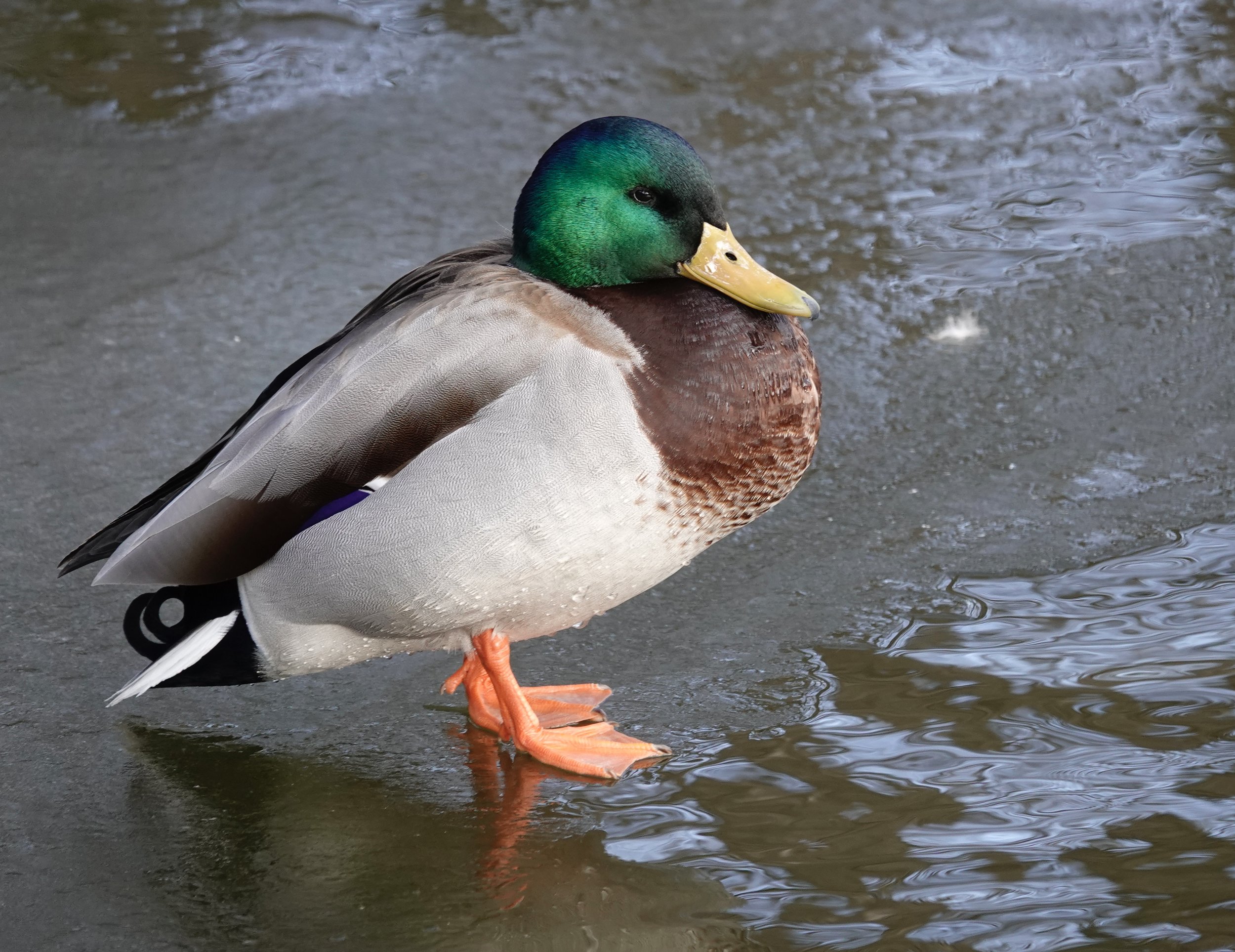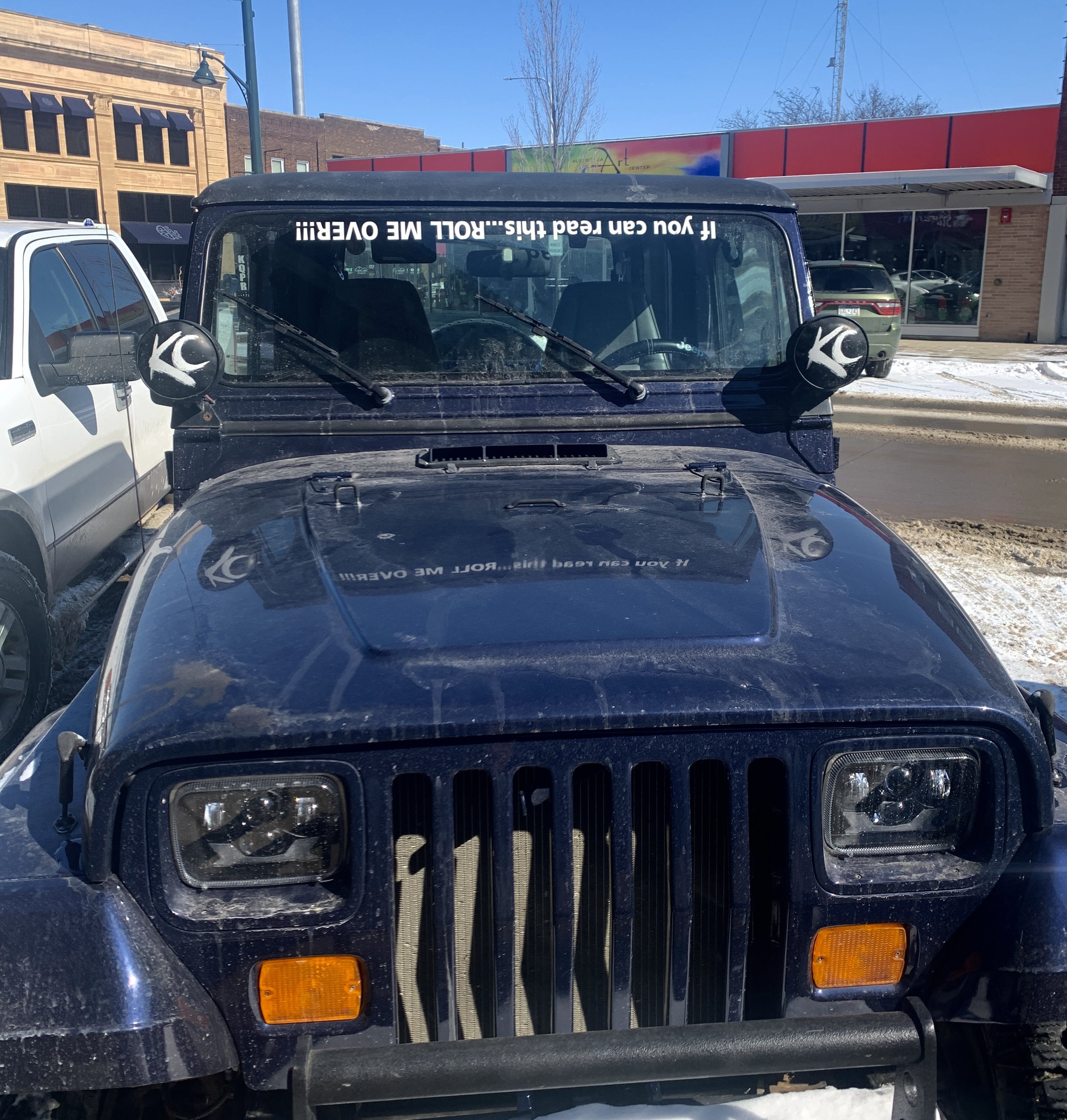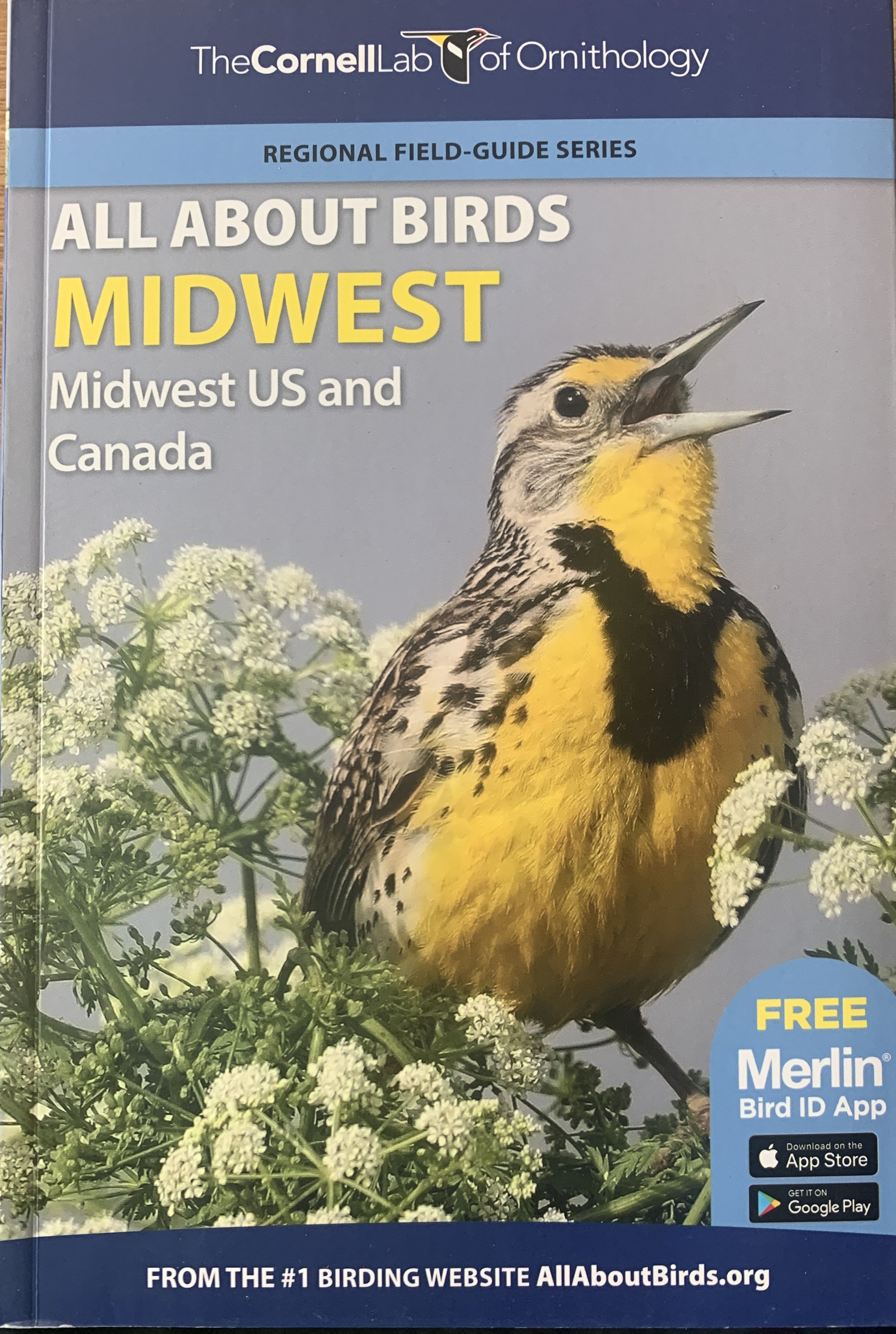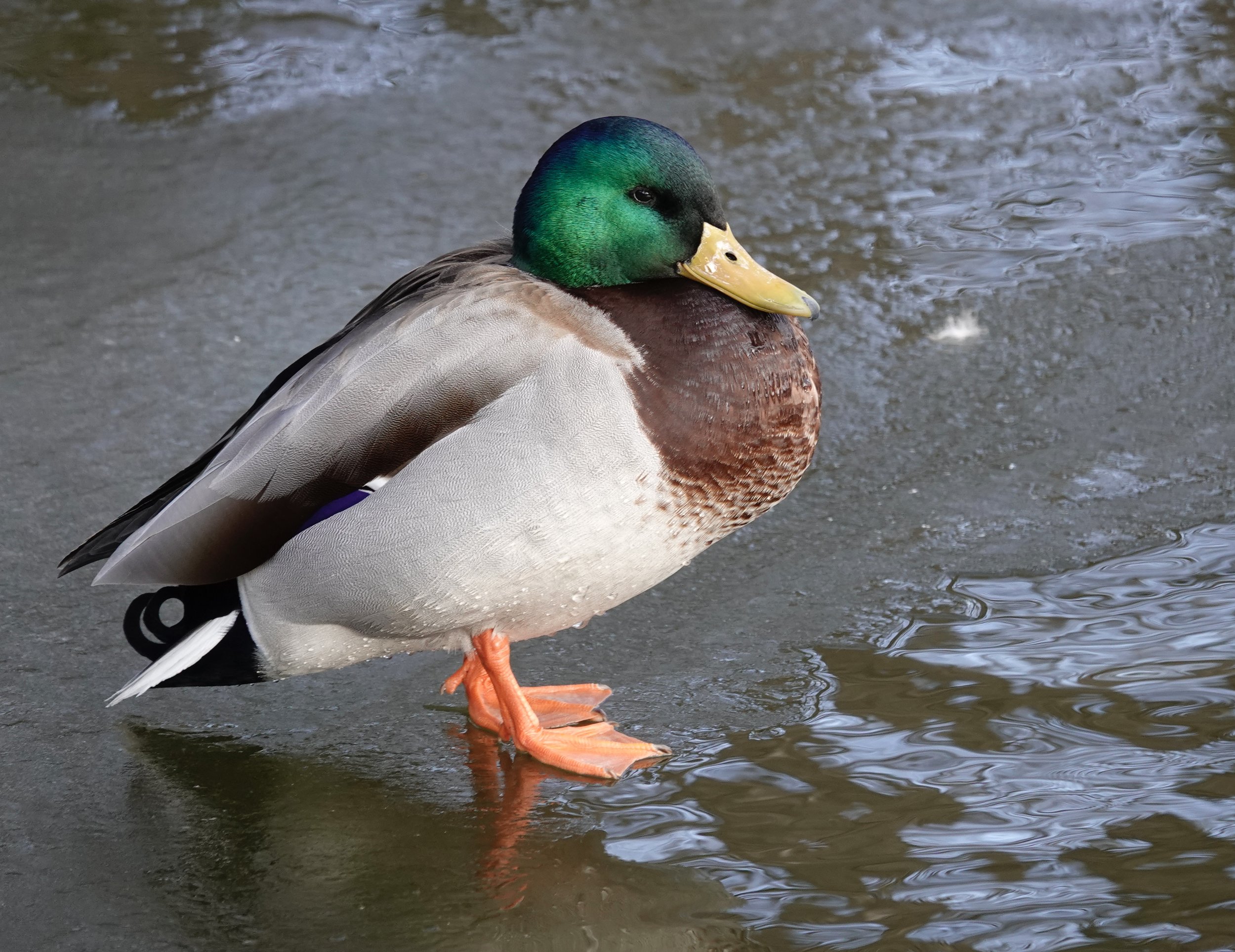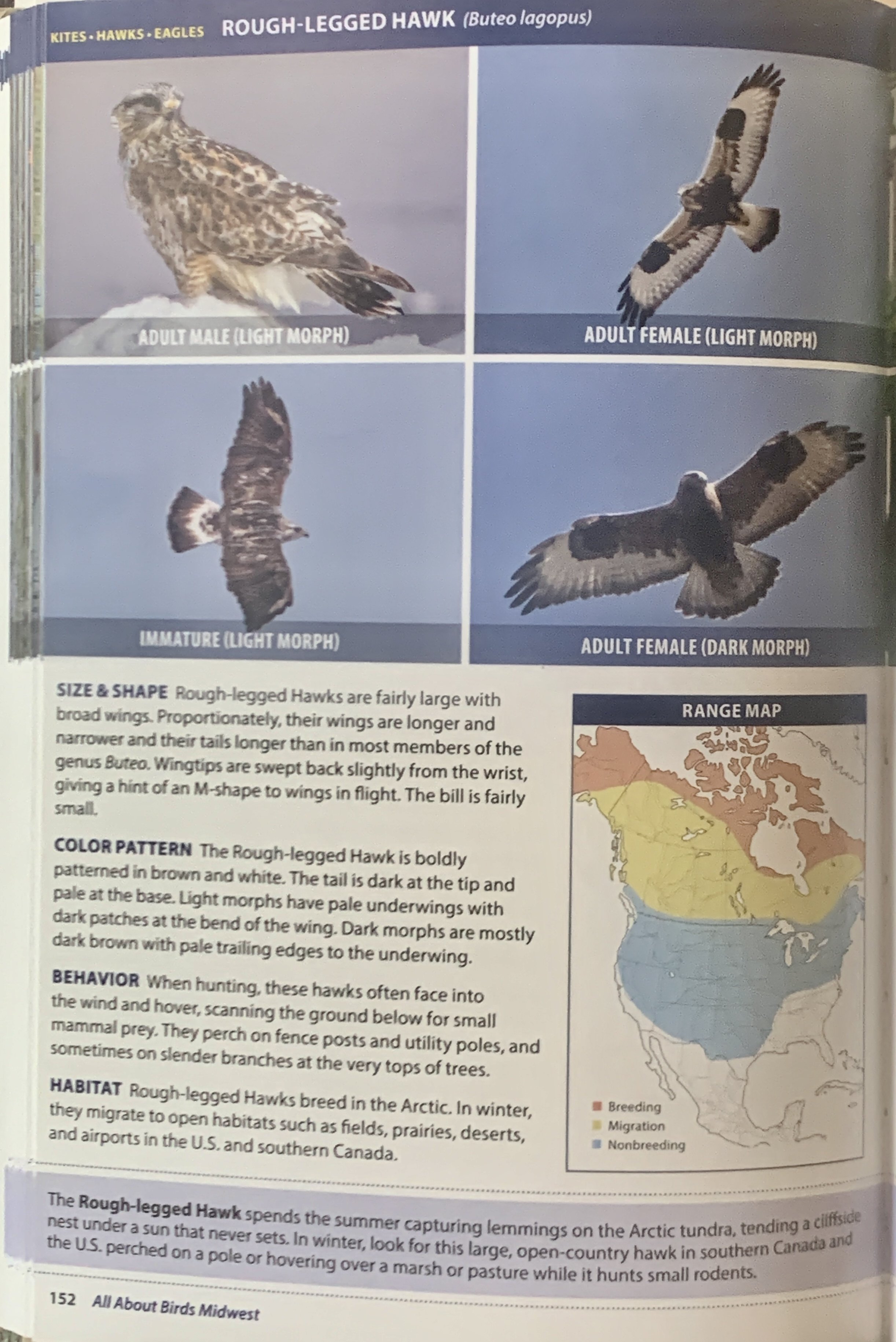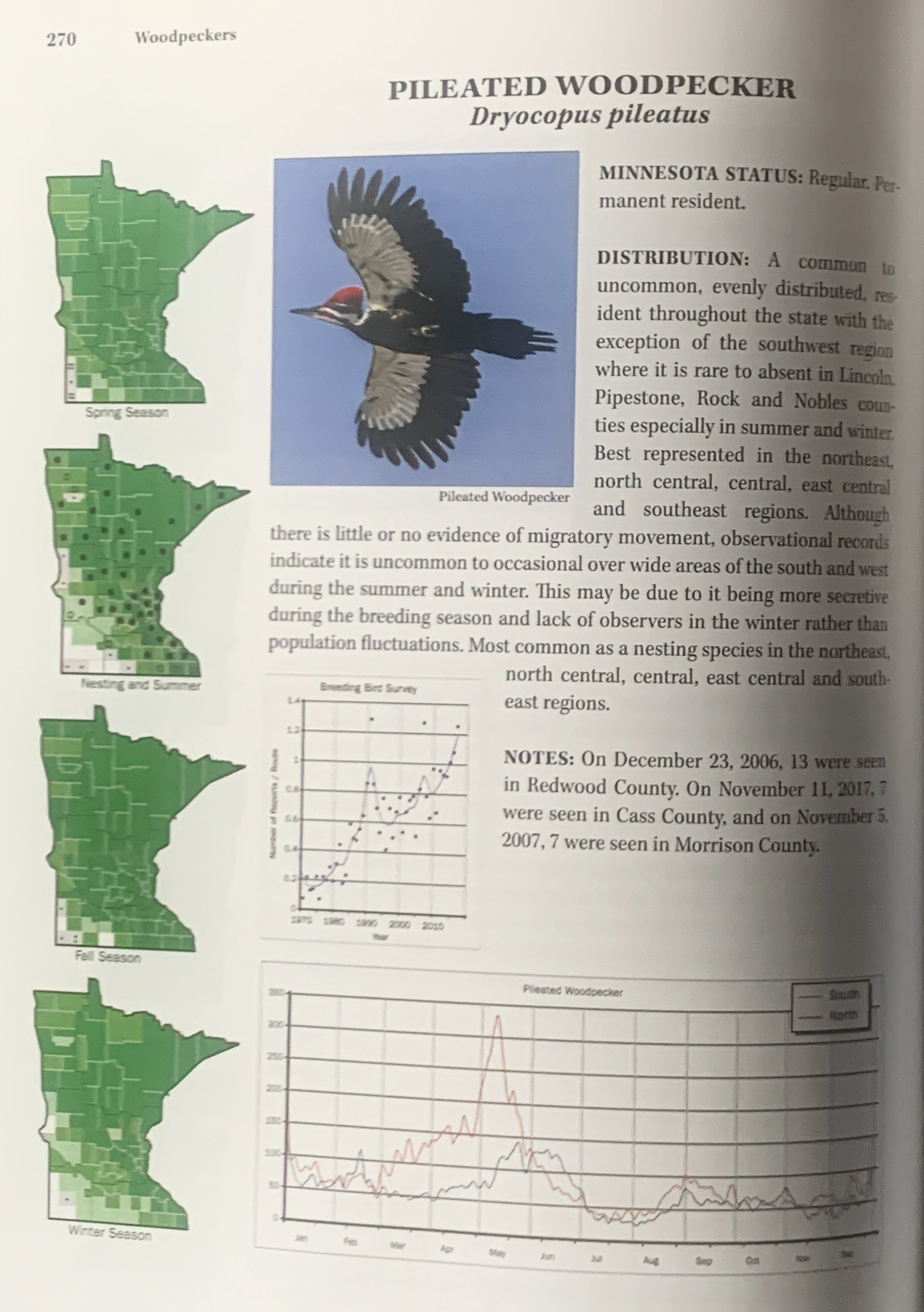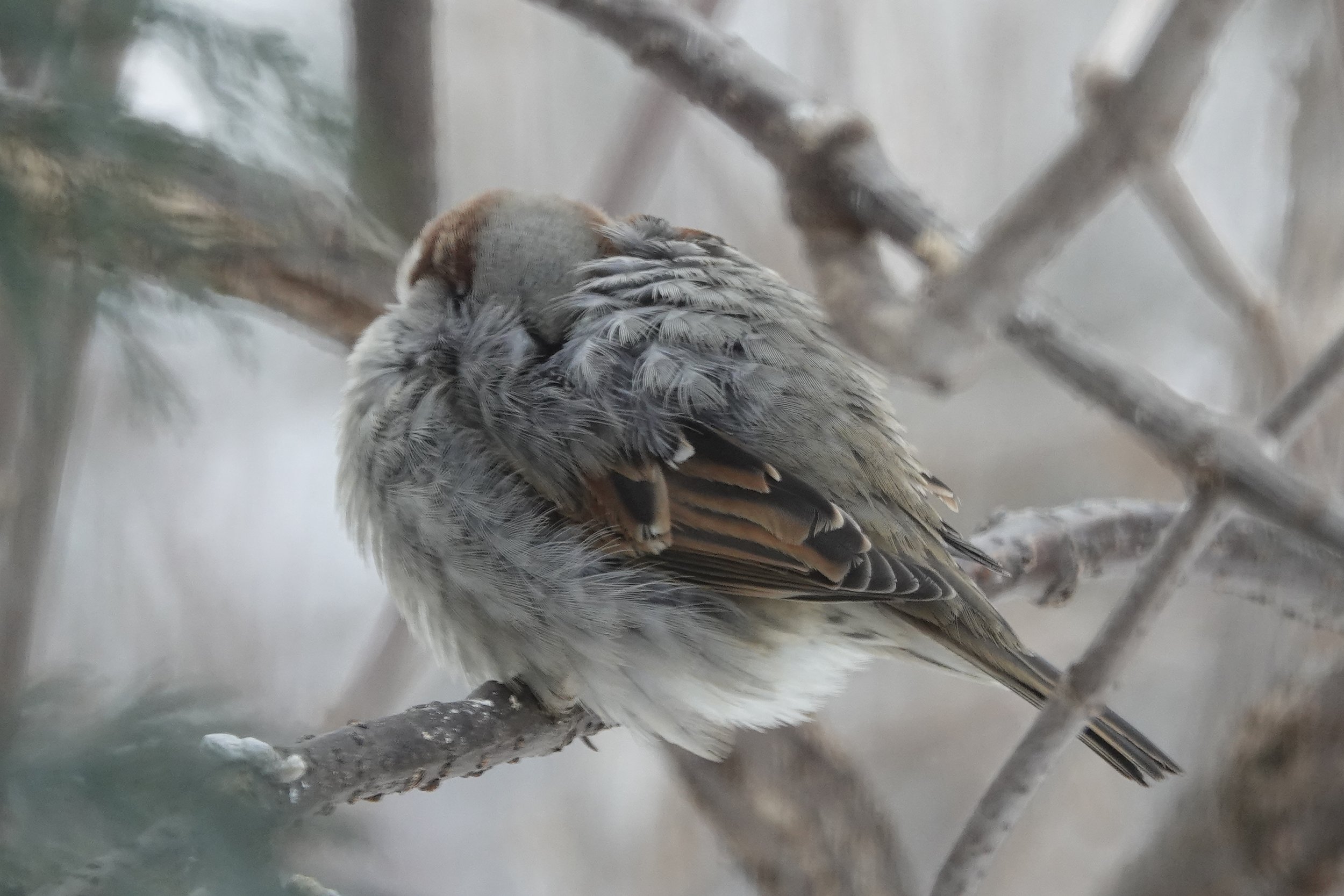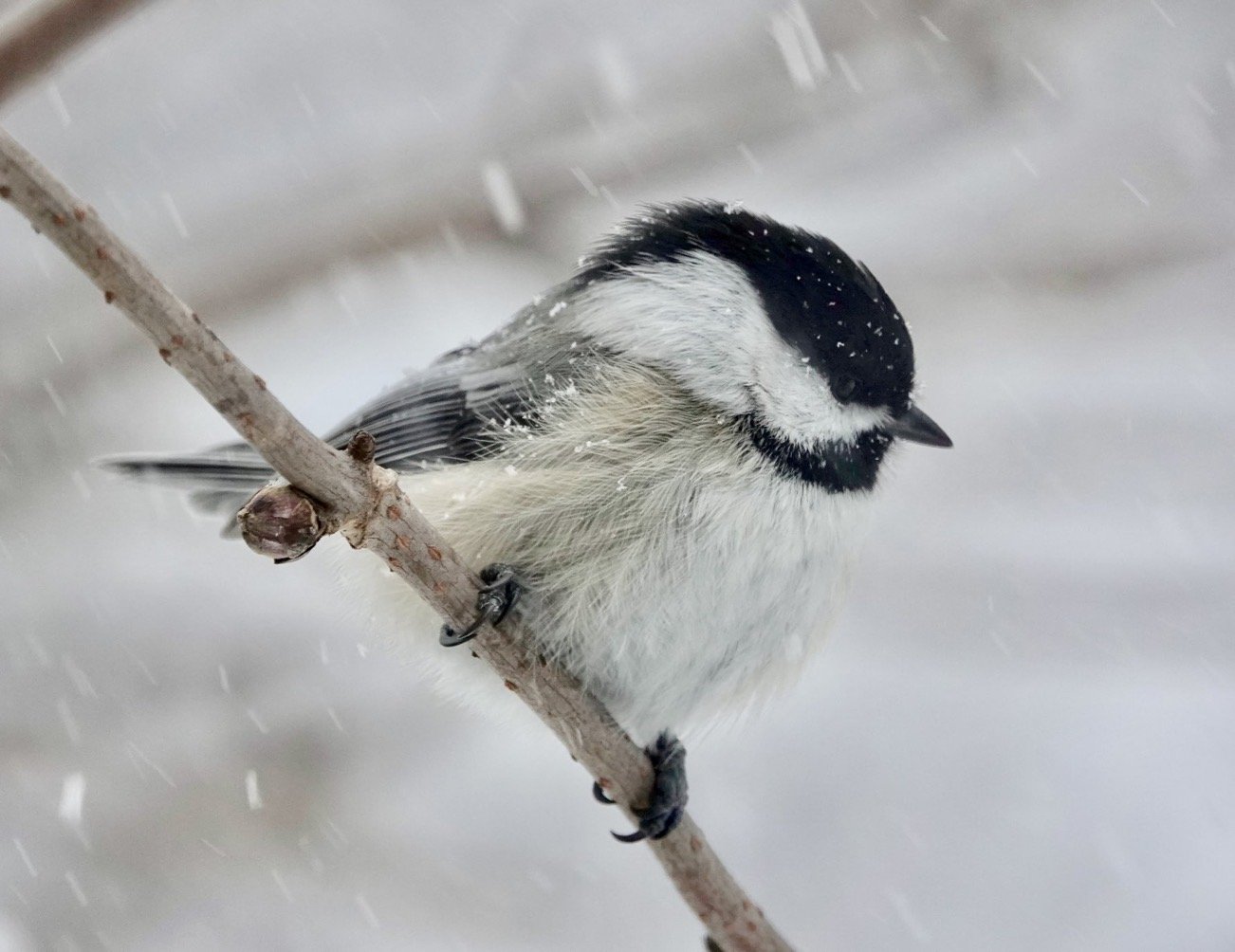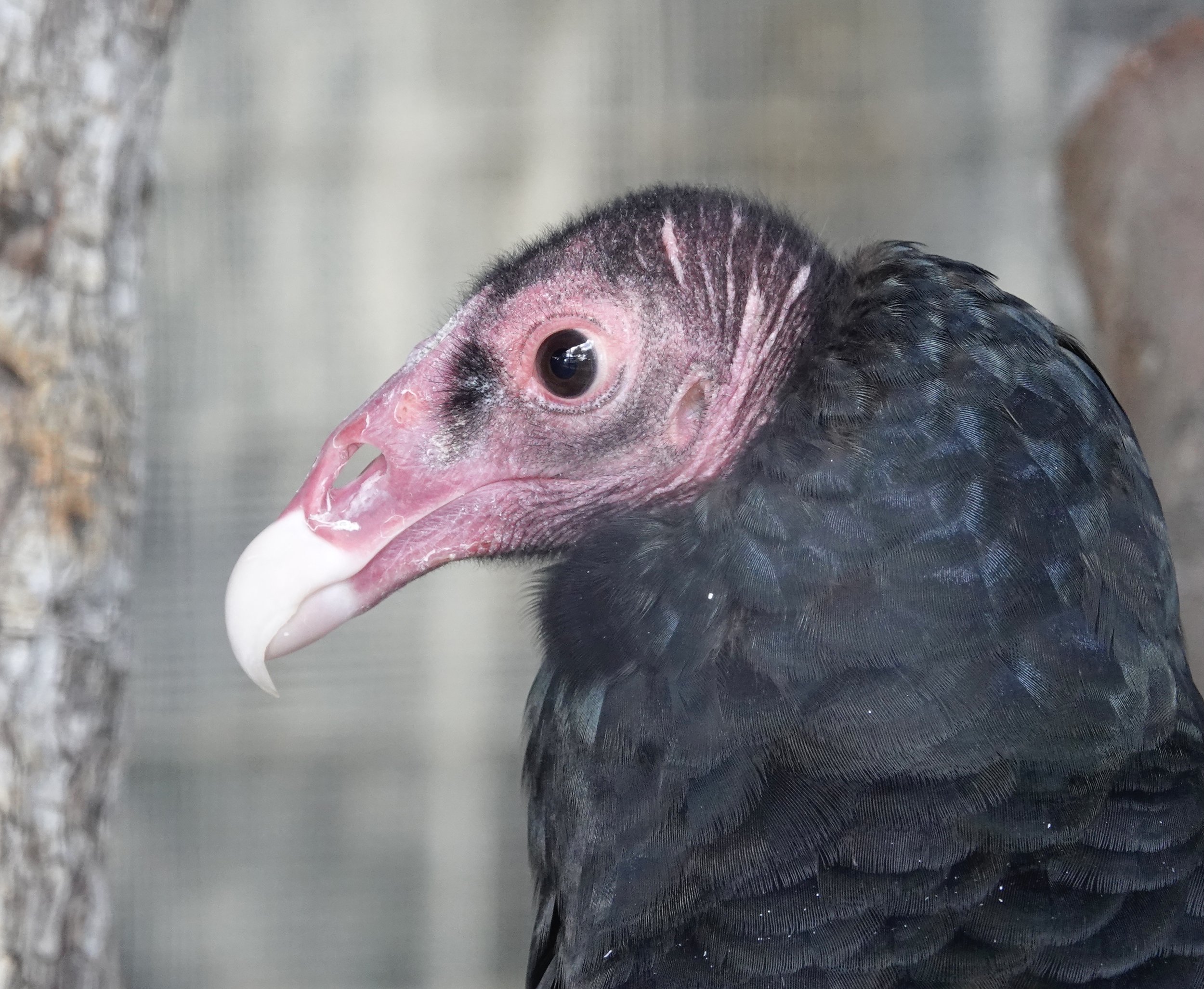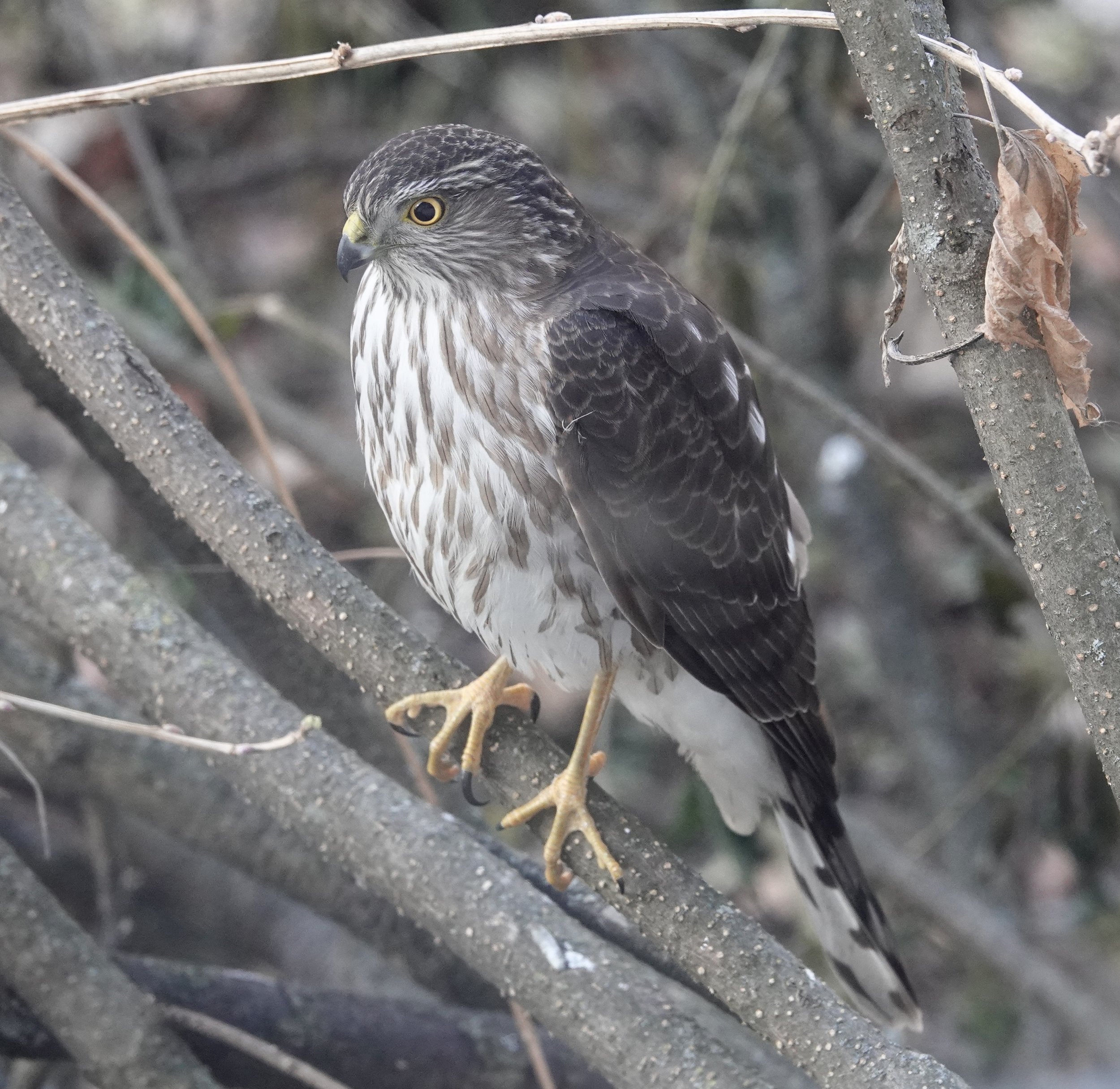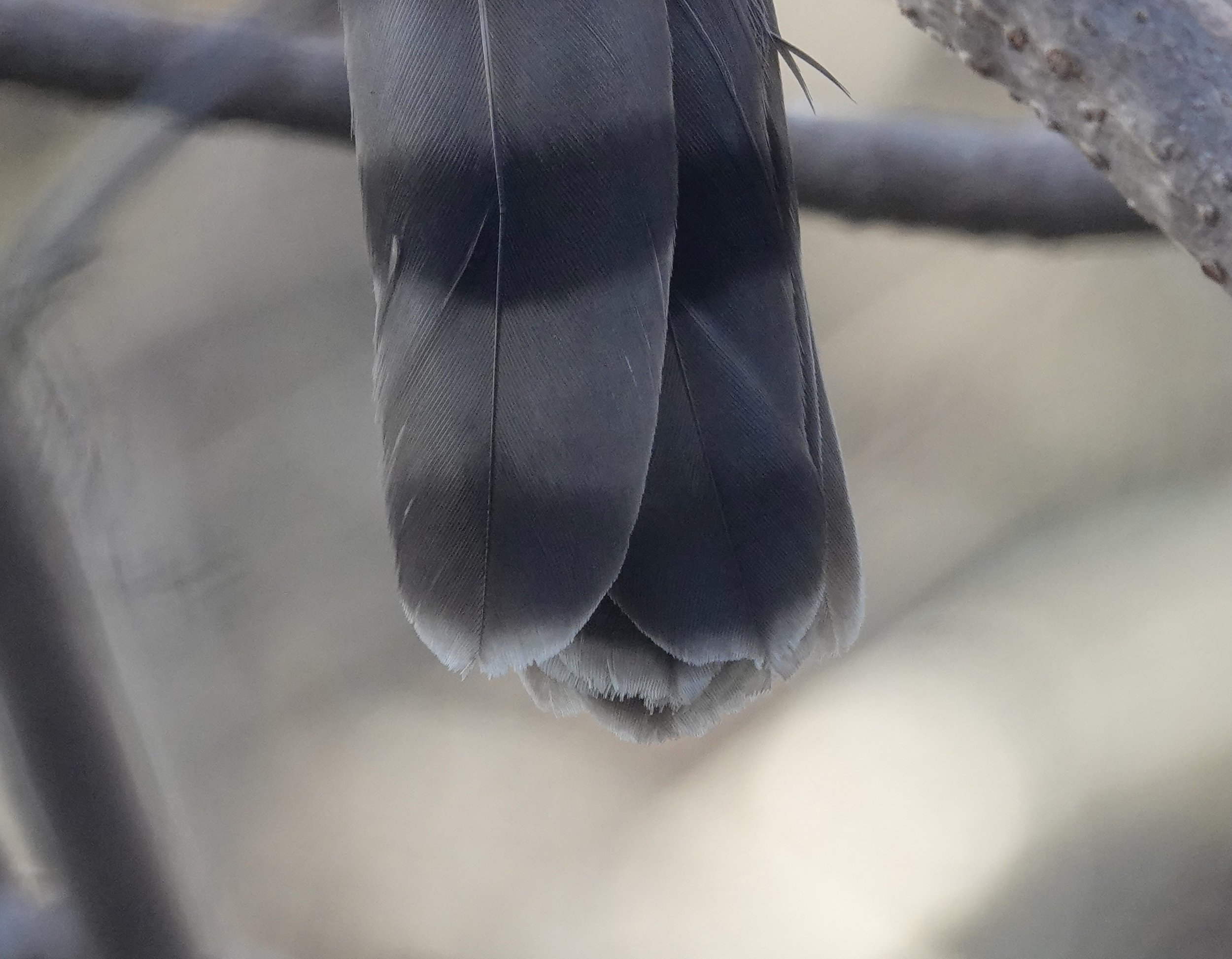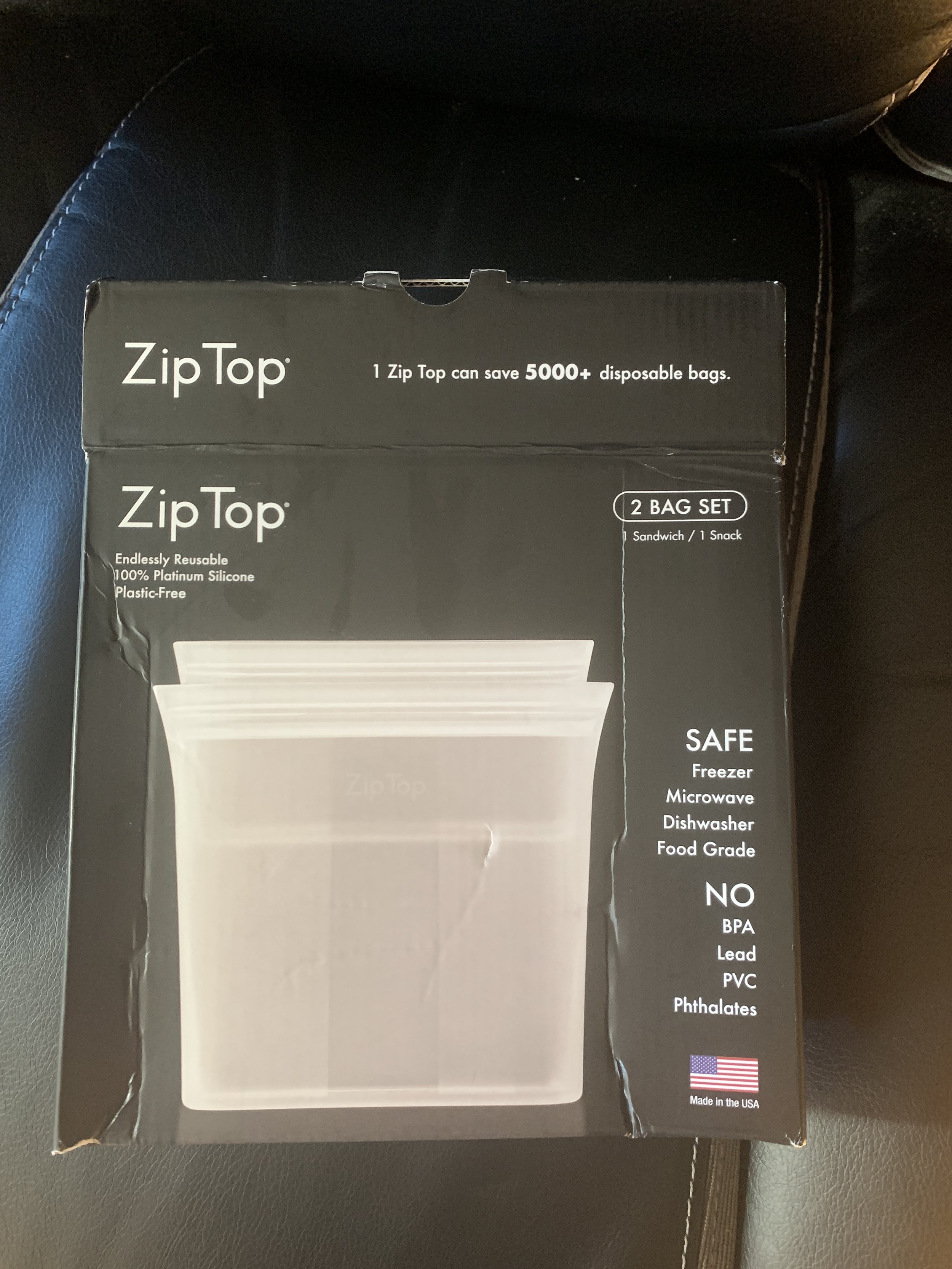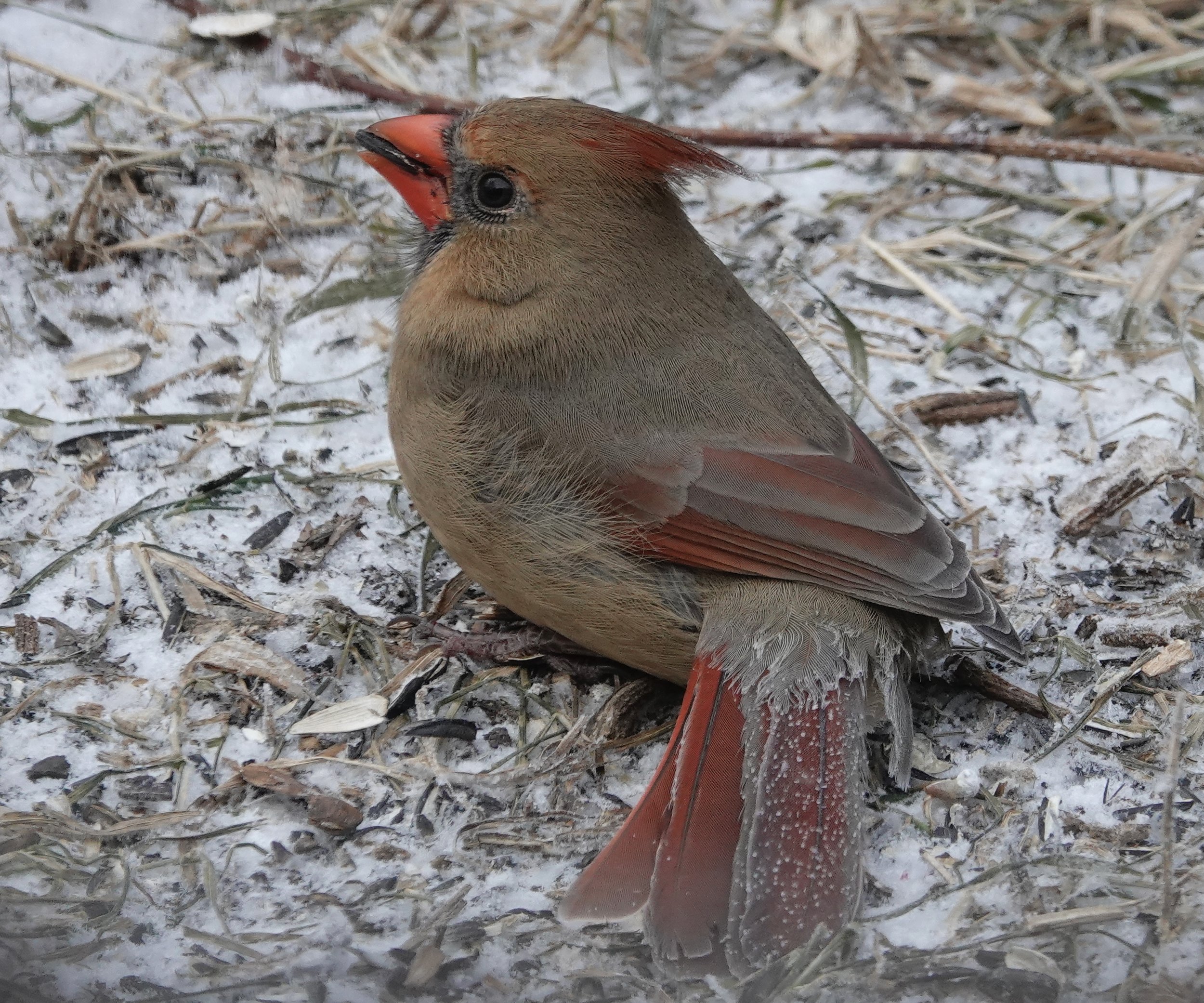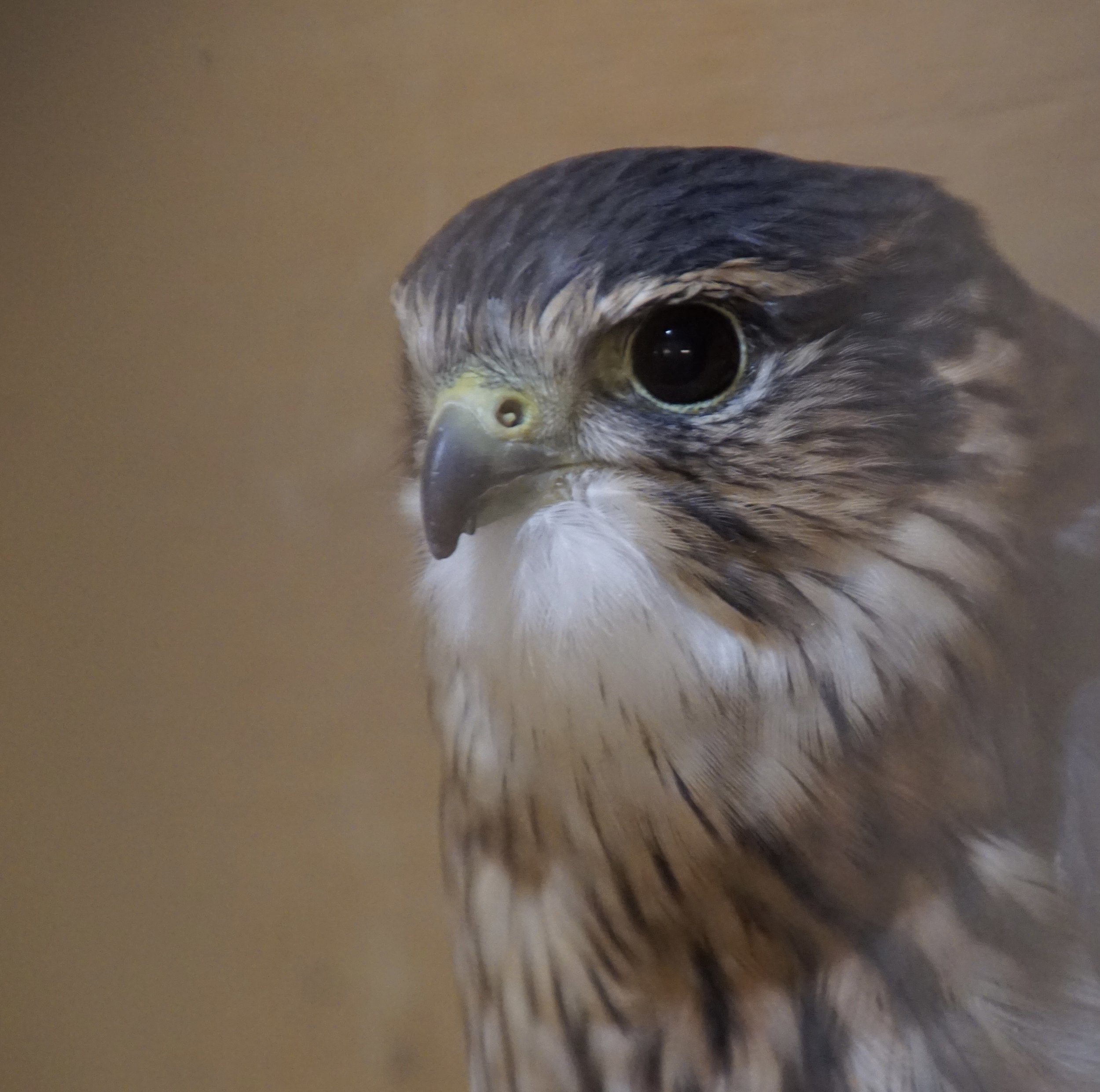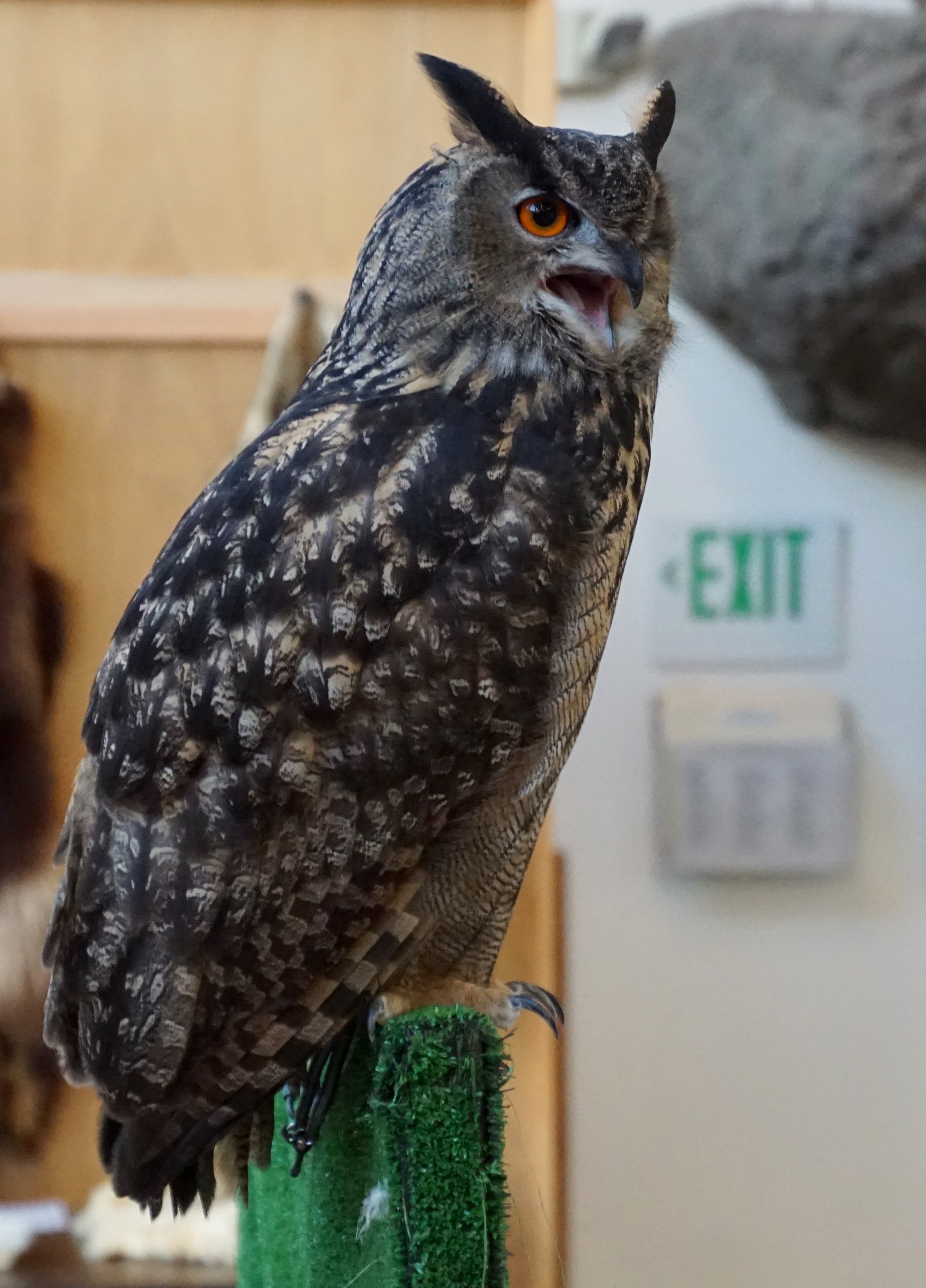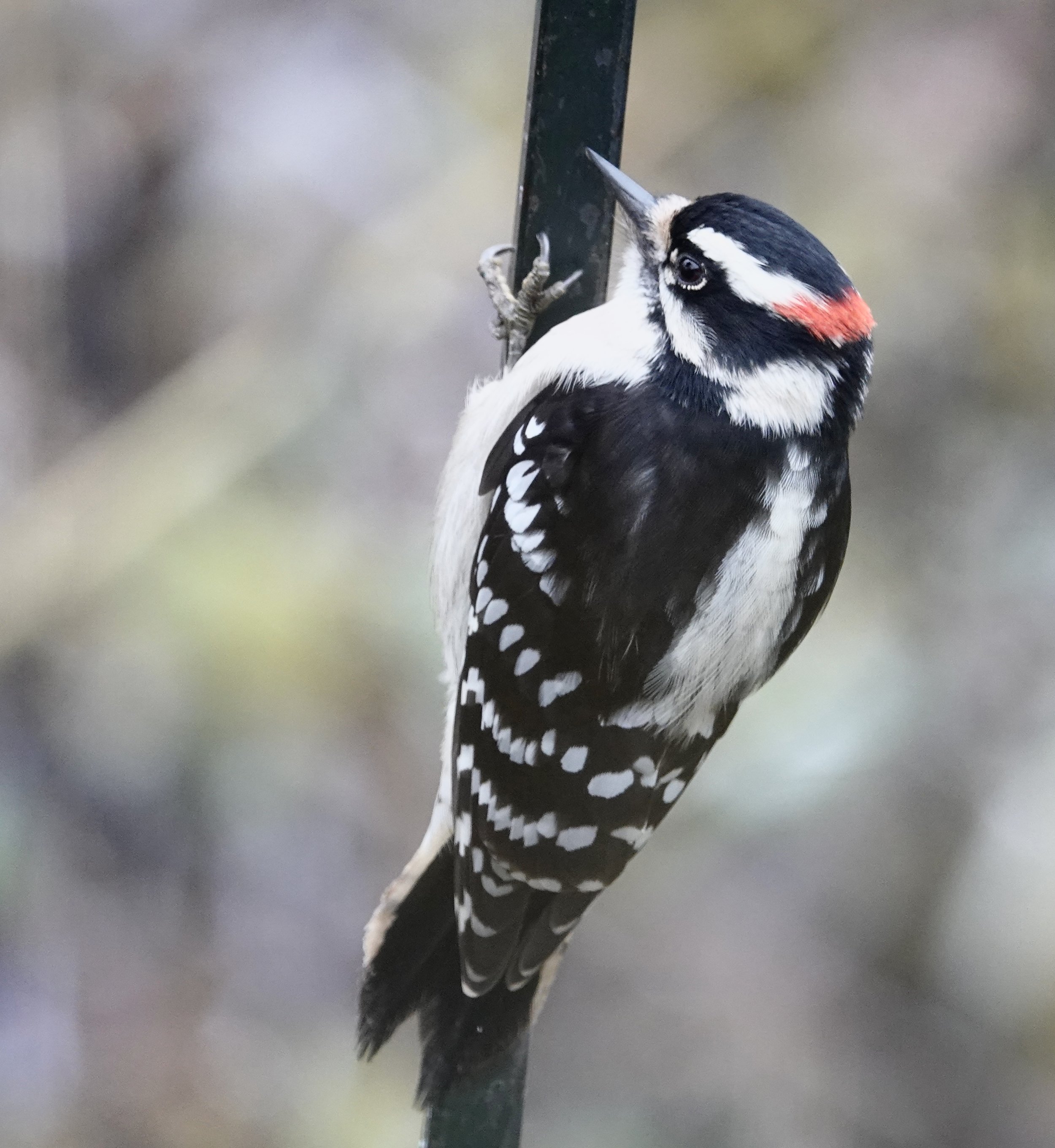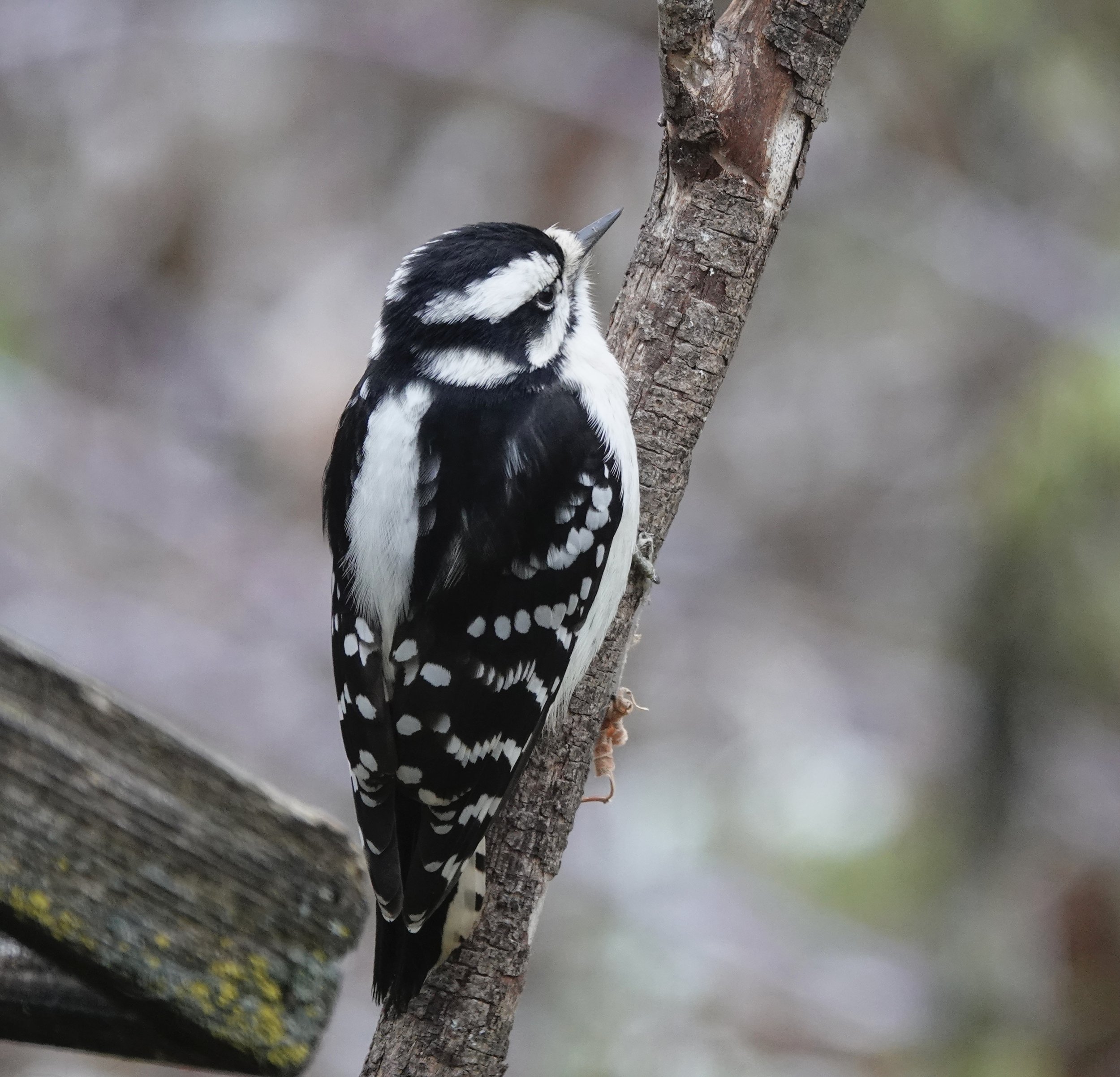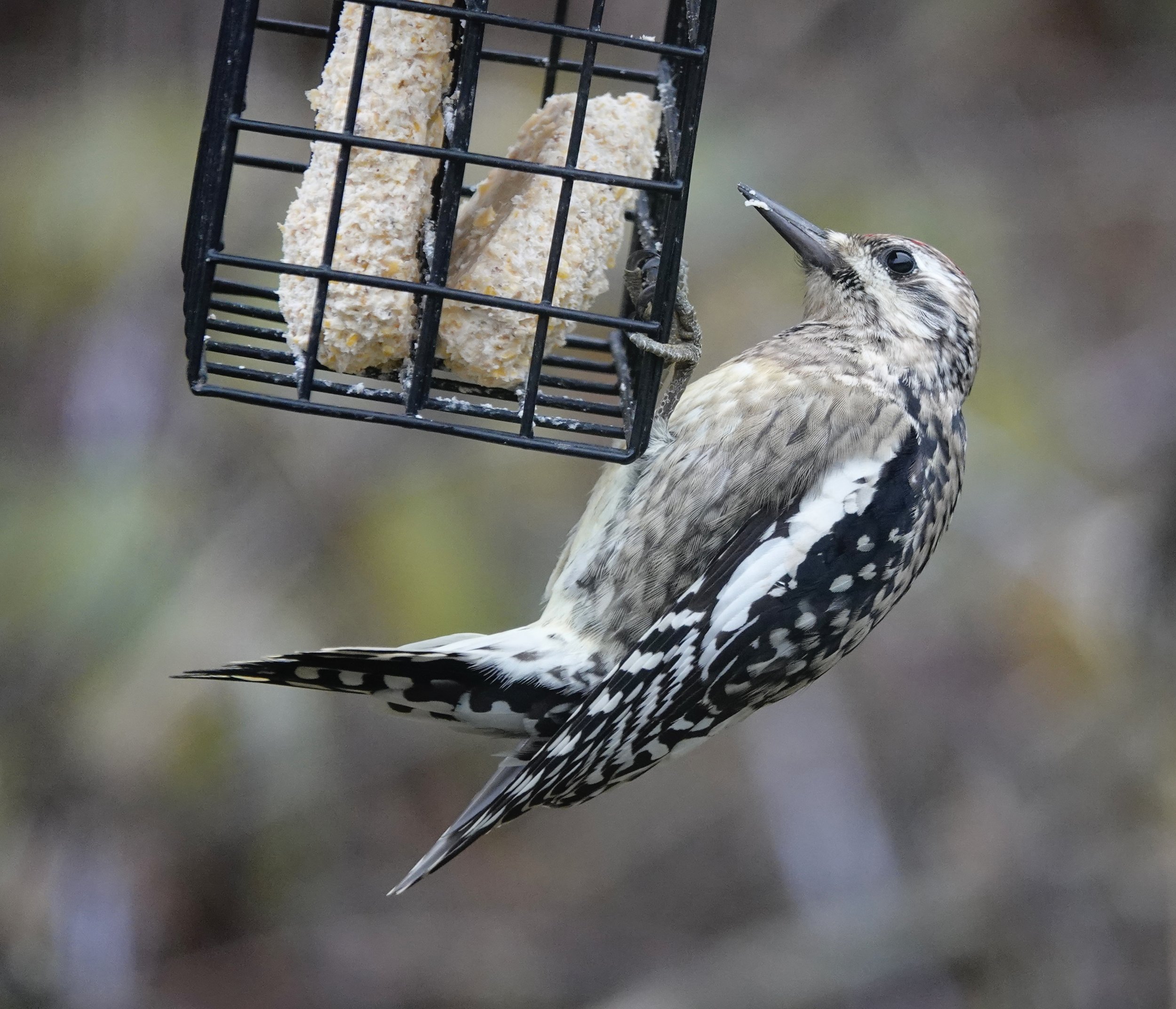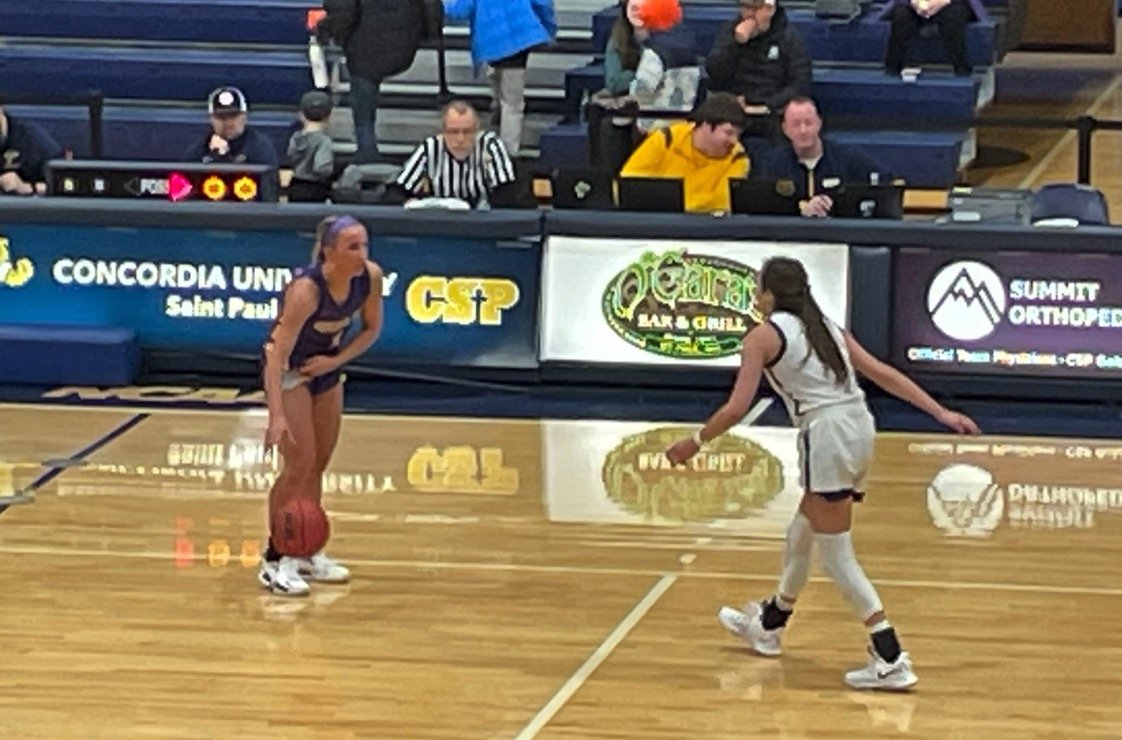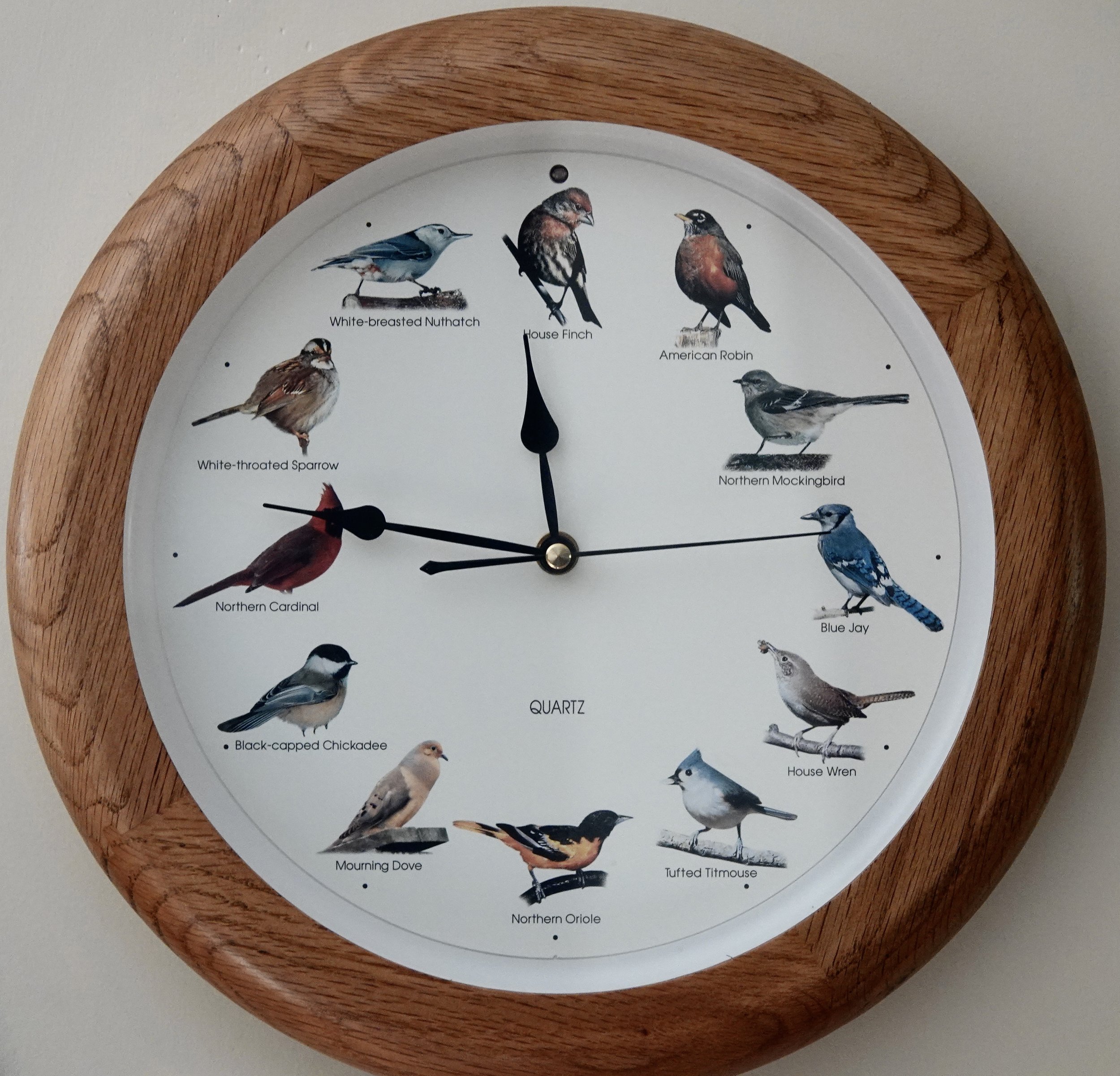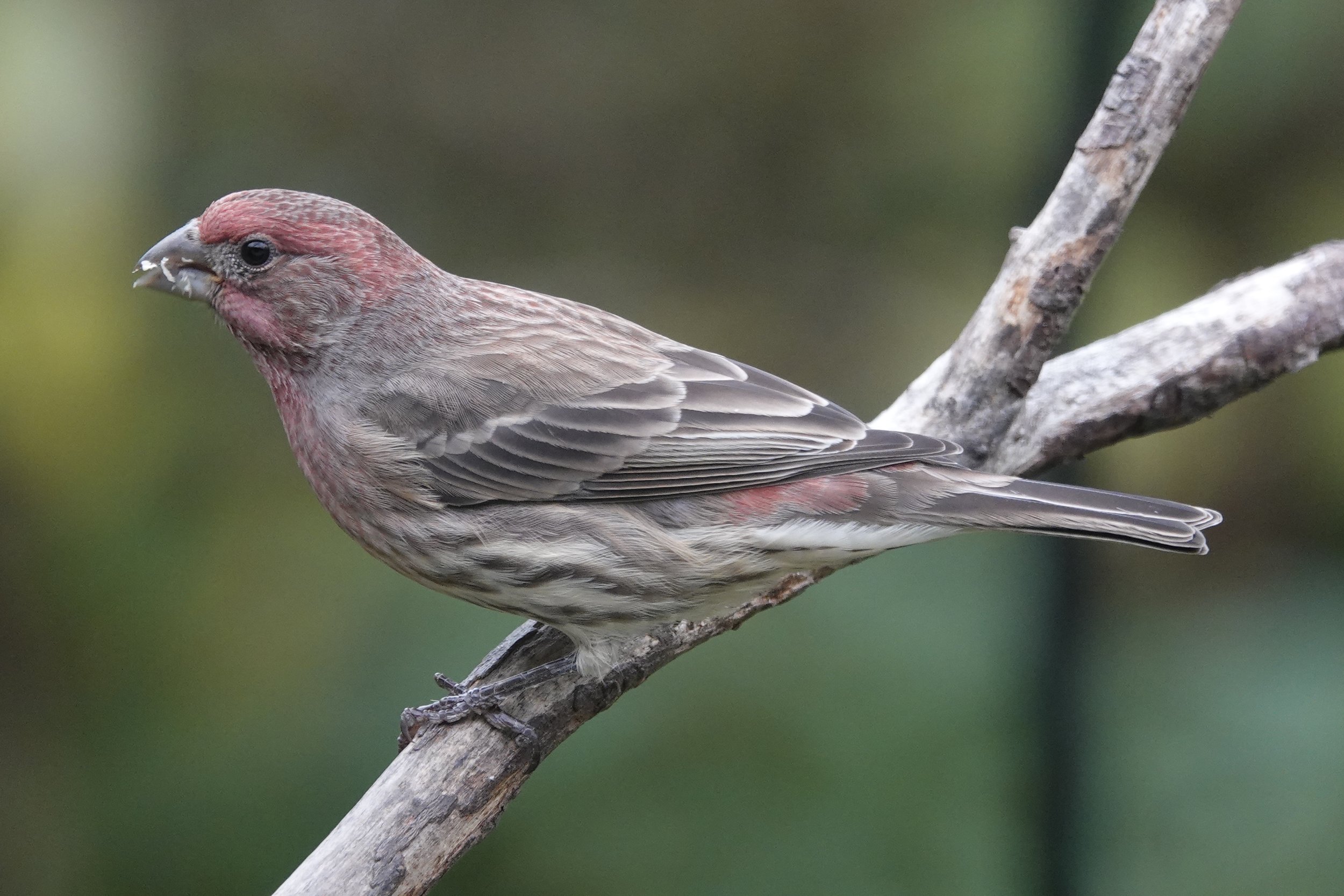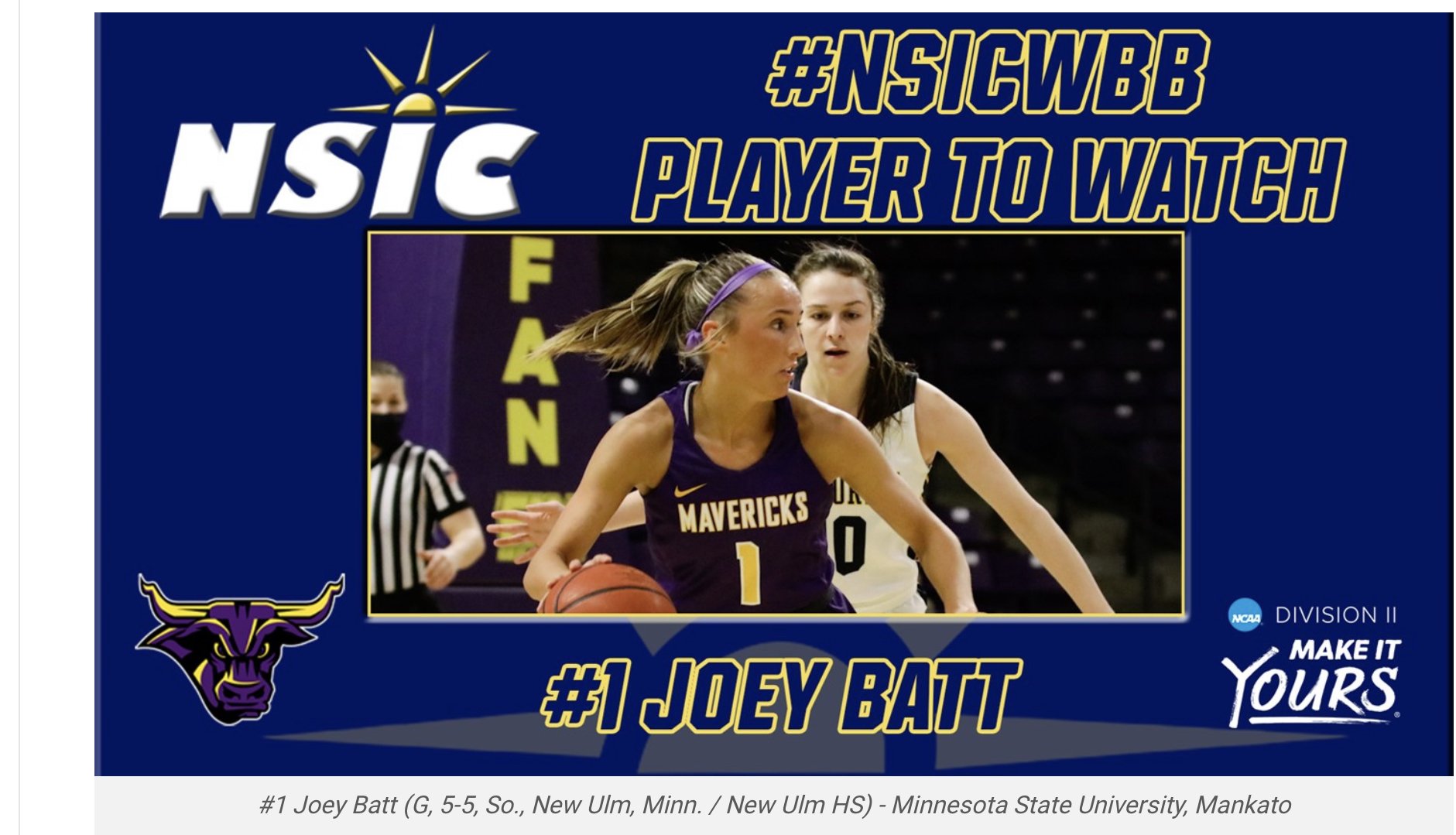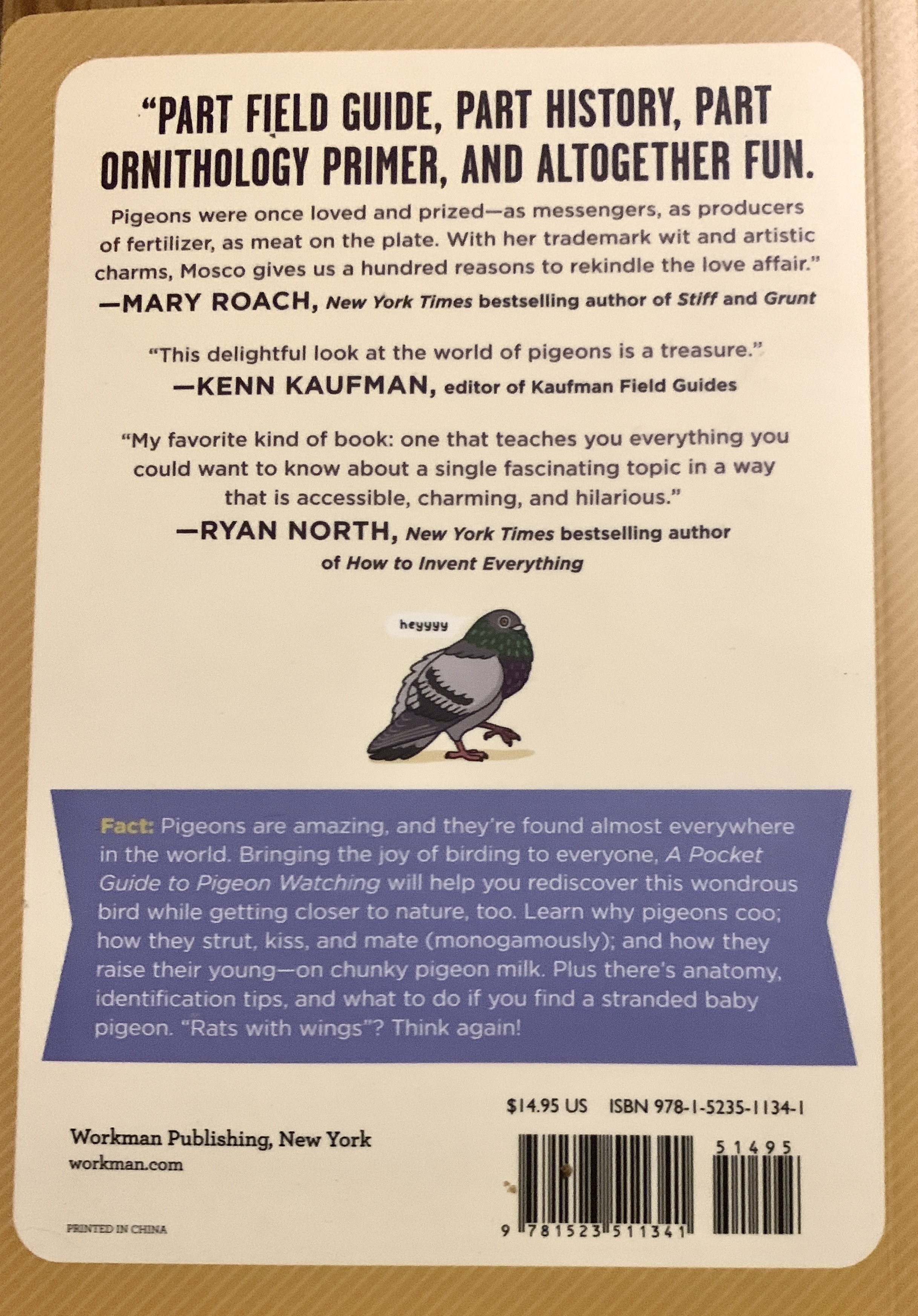This Mallard drake has recurved black central tail feathers, which give him the curly-tailed look he seeks. The only way to stop it from curling is by taking away its little broom. Photo by Al Batt
Naturally
“Dead skunk in the middle of the road. And it's stinkin' to high heaven.”
Loudon Wainwright III crooned that love song. The first dead skunk I saw on the road near the end of my driveway this year was on February 10. Settled into its winter home, the striped skunk becomes dormant but doesn’t enter a full state of hibernation. It goes into torpor—a deep sleep from which it awakes occasionally. As the season changes from winter to spring, skunks emerge to seek mates and sometimes get in harm’s way as the one did on the road at the end of my drive. Striped skunks are a polygamous species and a male takes multiple mates from late February through April. The scientific name for the striped skunk is Mephitis mephitis, meaning “bad odor” or “noxious vapor.” The word “skunk” comes from an Algonquin word.
I heard woodpeckers drumming. I typically hear them beginning in mid-January and regularly in February. They drum most frequently in the morning. Drumming rates are highest before nesting, lower during nesting and increase after the young fledge. Both sexes drum. Drumming is a response to longer day length and helps establish and maintain breeding territory, attracts a mate, maintains contact and strengthens pair bonds.
I have a heated dog dish that sits on a stand. It has an armored electrical cord to keep animals from gnawing on it. It works well as a bird waterer. When cleaning the dish, I discovered a mouse had entered through the hole for the cord and built a nest under the dish. It had an apartment with a heated ceiling and the rent was reasonable. It didn’t have to break out the long underwear.
I’m noticing more yellow on the bills of starlings. A starling’s bill is dark in winter, but begins turning yellow as the breeding season nears.
Q&A
“What kind of mixed seed should I put in my bird feeder?” None. I don’t use seed mixes in a feeder. Too much goes uneaten, clogs the feeder or falls to the ground. I use single ingredients in a feeder and like black oil sunflower seeds the best. I also feed nyjer seeds for the finches. Occasionally, I put millet on the ground when there are large numbers of native sparrows (which includes juncos) around. I offer suet and peanuts, and some folks feed safflower seeds to lessen squirrel activity at the feeders. I enjoy providing room service to the birds at my feeders. Busy feeders mean I’ve gotten many referrals. Feeding birds provides a positive therapeutic effect on those who feed their avian amigos. I know it makes me happy. Watching birds is one of the greatest shows on earth.
“Last year, I watched a male cardinal feeding sunflower seeds to a grosbeak. Why was it doing that? And do cardinals mate for life?” He wanted to offer you a photo opportunity. Male cardinals occasionally feed nestlings or fledglings of other species, although not because they have taken over another bird’s nest. This may happen because another chick is begging nearby and the cardinal has a strong parental instinct. Birds often feed babies that aren’t their own. The instinct to stuff food in an open mouth is strong. Perhaps the threat of not feeding one of your hungry chicks is greater than the risk of feeding someone else’s. A brown-headed cowbird will lay an egg in a cardinal’s nest and the cardinal will raise the cowbird as its own. I’ve watched a male cardinal fly down to the edge of a pond and feed koi. Cardinals don’t mate for life and new pairs form during the breeding season, although some cardinals remain paired on the breeding territory all year and others get amicable divorces.
“Why doesn’t a duck’s quack echo?” A quack can be a fading sound, with a gradual decay, making it difficult to tell the difference between the quack and the echo, but a duck’s quack echoes.
“Do opossums carry rabies?” Any mammal can get rabies, but it’s extremely rare for an opossum to contract the viral disease. It’s believed that the low body temperature of an opossum inhibits the virus and makes it difficult for it to survive.
“When does the sap run?” Maple sap runs best when daytime temperatures are in the high 30s to mid-40s and overnight temperatures are below freezing. In Minnesota, sap usually runs from March 15 to April 20, but the dates can vary. Sap is converted to syrup by boiling, taking 40 gallons of sap on average to produce one gallon of maple syrup.
Thanks for stopping by
“I would maintain that thanks are the highest form of thought, and that gratitude is happiness doubled by wonder.”—G.K. Chesterton.
“An early-morning walk is a blessing for the whole day.”—Henry David Thoreau.
Do good.
©Al Batt 2022
Minnesota State (20-5) defeated Winona State 78-55. Joey Batt (shooting in photo) had 14 points, 4 rebounds and 4 assists. Emily Russo scored 14, Tayla Stuttley tacked on 10 points and 5 assists, and Mikayla Nachazel added 10 points and 5 rebounds.
Ratchet-jawing on the radio about birds and such.
Joey Batt, making a point above, made it to the NSIC all-conference first team. Way to go, Jo.
I had hoped these two flamingos would form one of those cutesy avian hearts and pose patiently, but they had a heartfelt spat instead.
Whatever is eating the sign.
It’s either an emu or my driver’s license photo.

